The Lisbon Tram Museum is located under the 25 Abril bridge in the middle of the Companhia Carris de Ferro de Lisboa premises. The exhibition is not particularly large, but it has a special feature.
Trams and buses of the operating company Carris have been travelling through Lisbon since 1872. The museum’s mission is to instil in visitors an enthusiasm not only for Lisbon and public transport, but also for the historic vehicles.
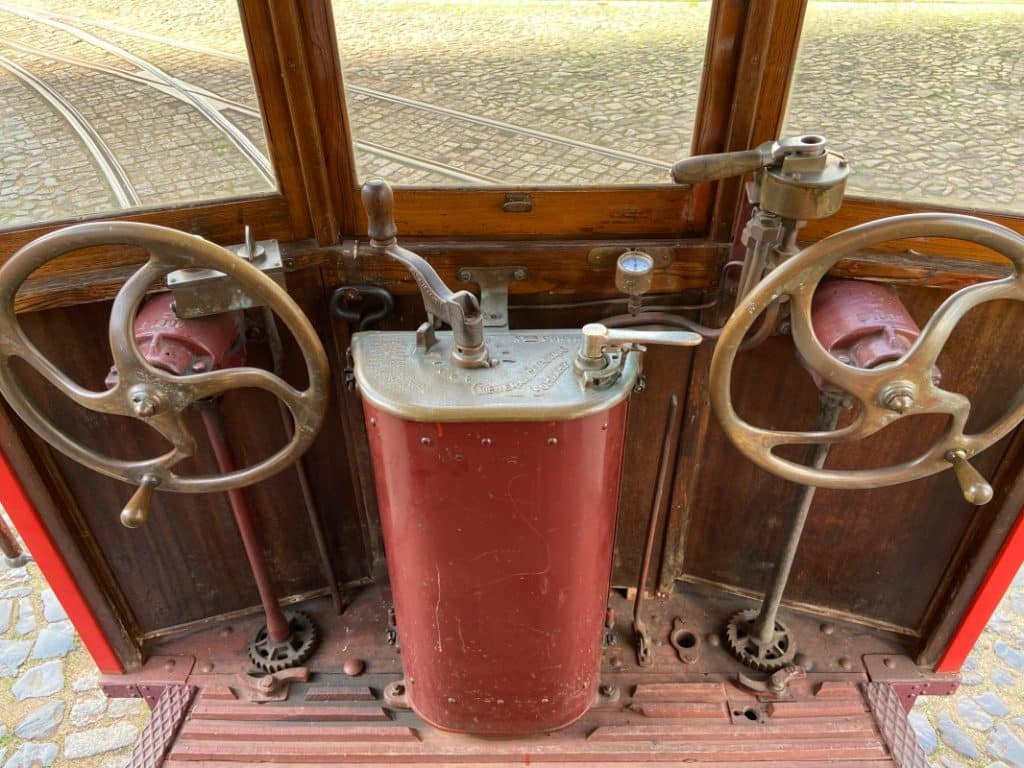
Welcome to the Lisbon Tram Museum
Just behind the large fence that separates the factory premises from the street is the entrance to the Museu da Carris. Right in the vestibule, we were told that only part of the exhibition could be seen in this building. At the end of the tour, a colleague would take us to the second area of the exhibition. We should please wait at the door. All right! We set off to discover the first exhibition area.
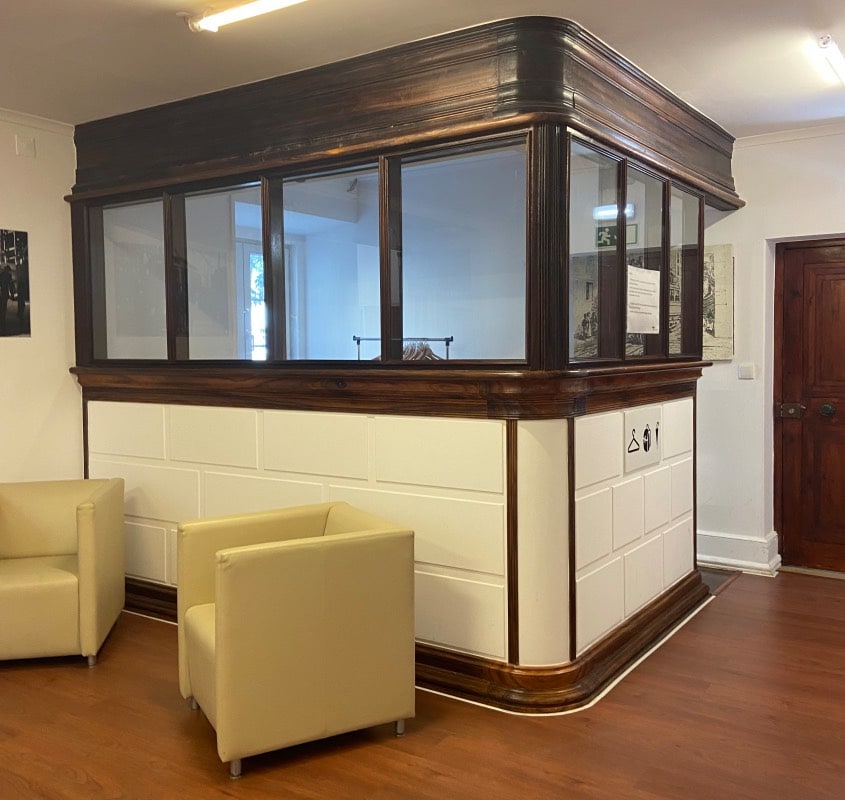
Building 1 in the Lisbon Tram Museum
The exhibition starts with the historical development of public transport in Lisbon. I find the topics about the Lavra, Glória and Bica funiculars and the information about the Santa Justa lift interesting. Of course, you can also see uniforms and tools that take you back in time.
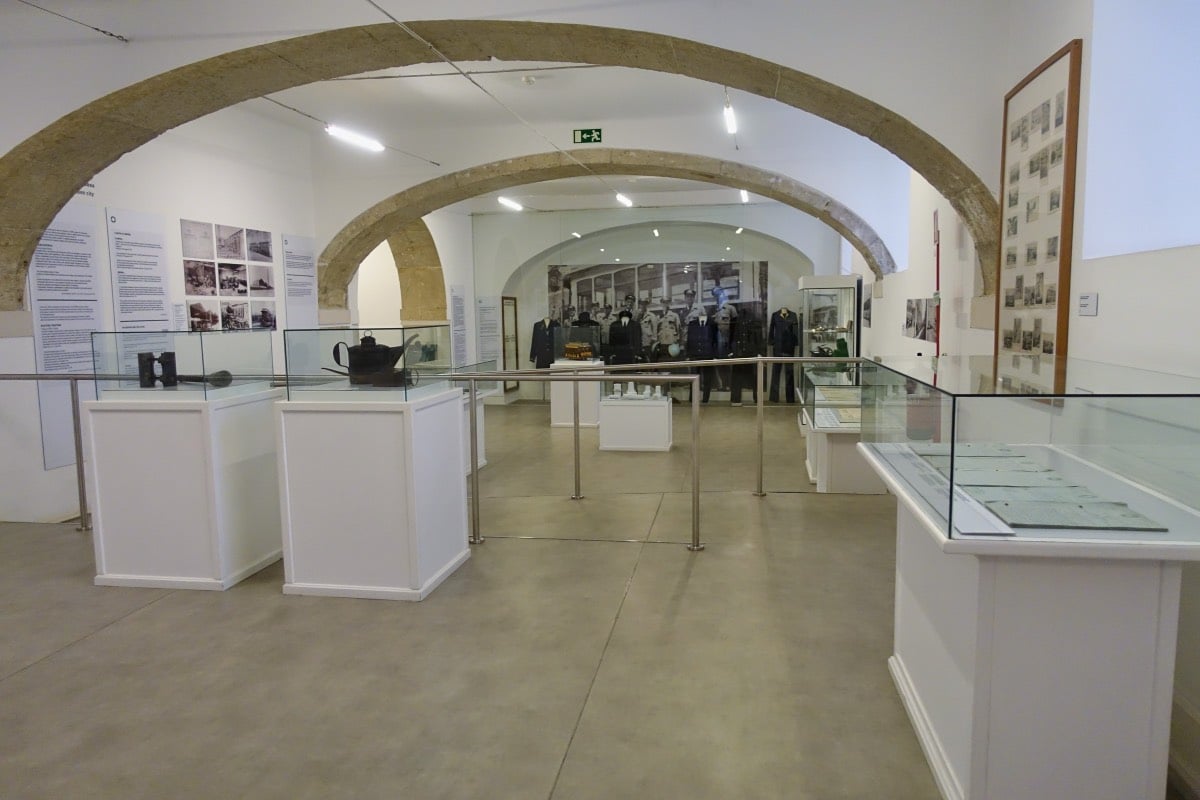
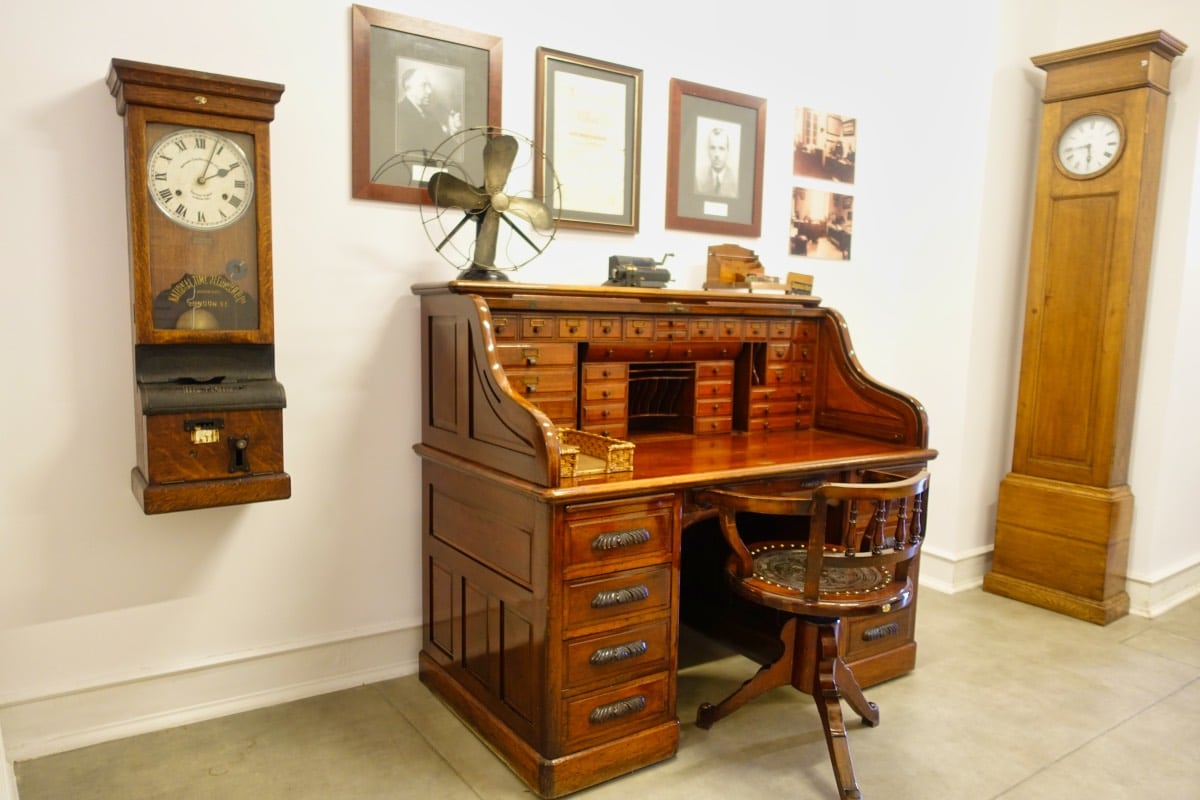
It is exciting that the company started early to take care of the physical well-being of the employees. So there was a company hairdresser and a company doctor for the employees. The furnishings of the old hairdresser and the doctor’s room can be seen.
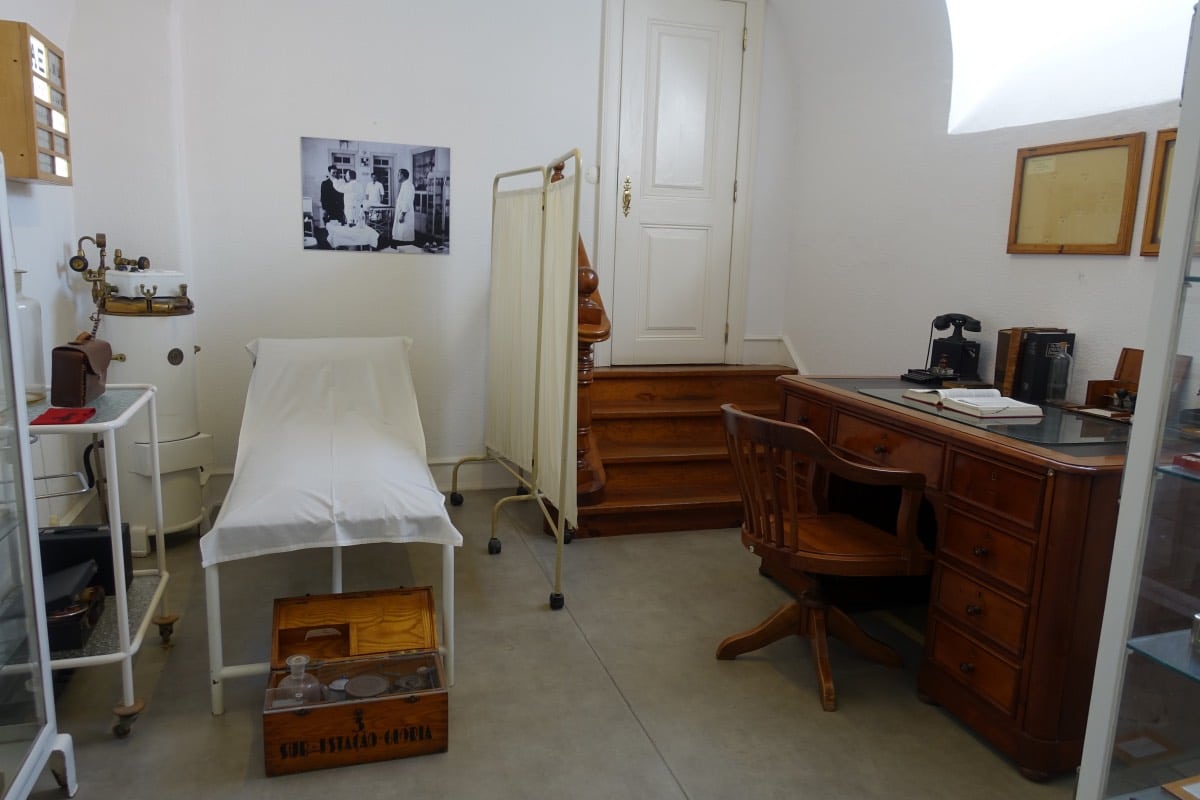
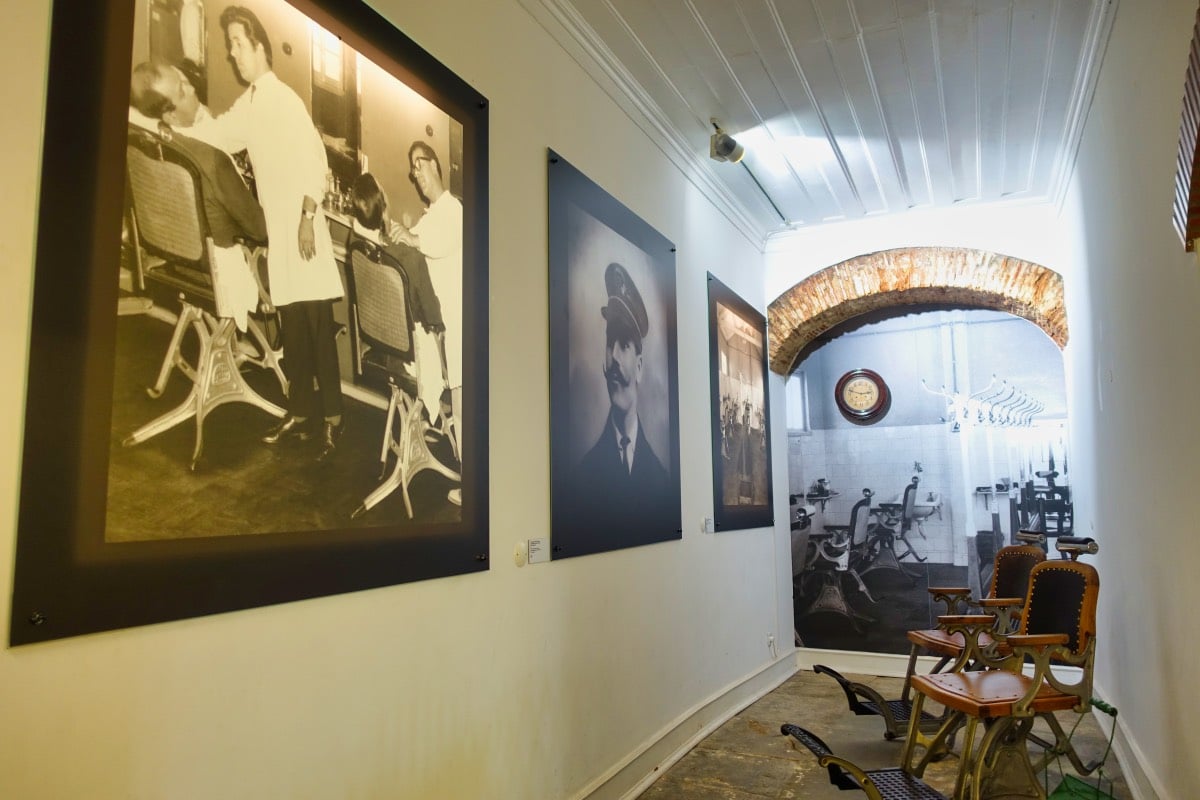
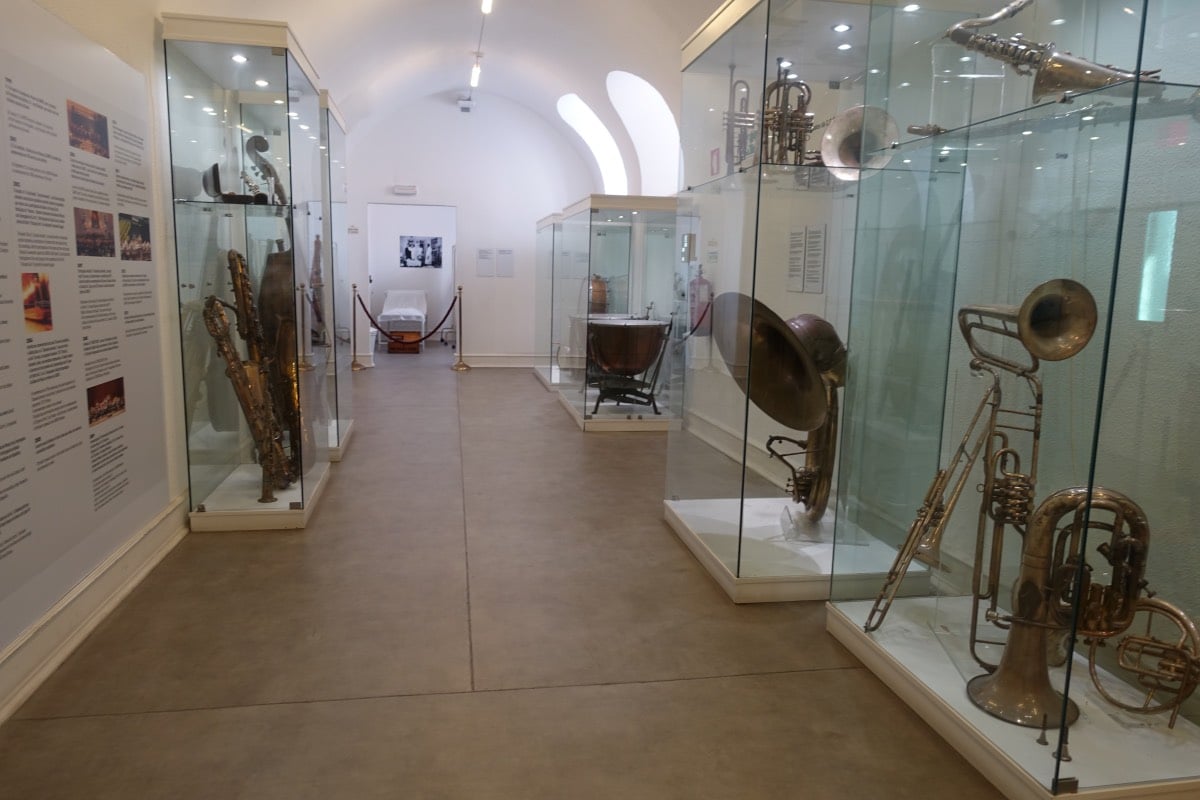
There was a time when large companies also had a music band. The history of the band and some instruments are also exhibited in the first area of the museum.
This first section is quite small and clear. It doesn’t take long to stand in front of a locked door waiting to be picked up by the staff member mentioned at the beginning.
The door opens
Admittedly, I was getting a little impatient. After all, we and two other visitors were the only ones in the first exhibition area. Had the staff member at the entrance passed on the information?
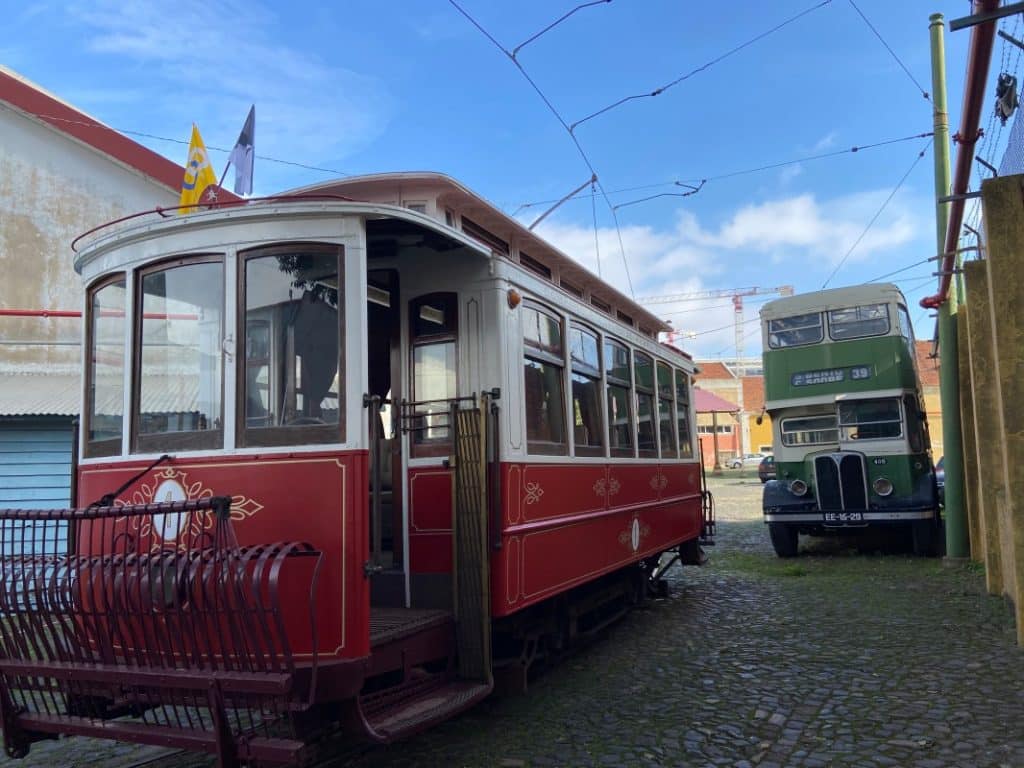
Then the door opened and a friendly tram driver pointed brightly to an old historic tram. He invited us to get on.
We looked at each other in disbelief, were we actually allowed to ride in a historic tram to the second area of the exhibition?
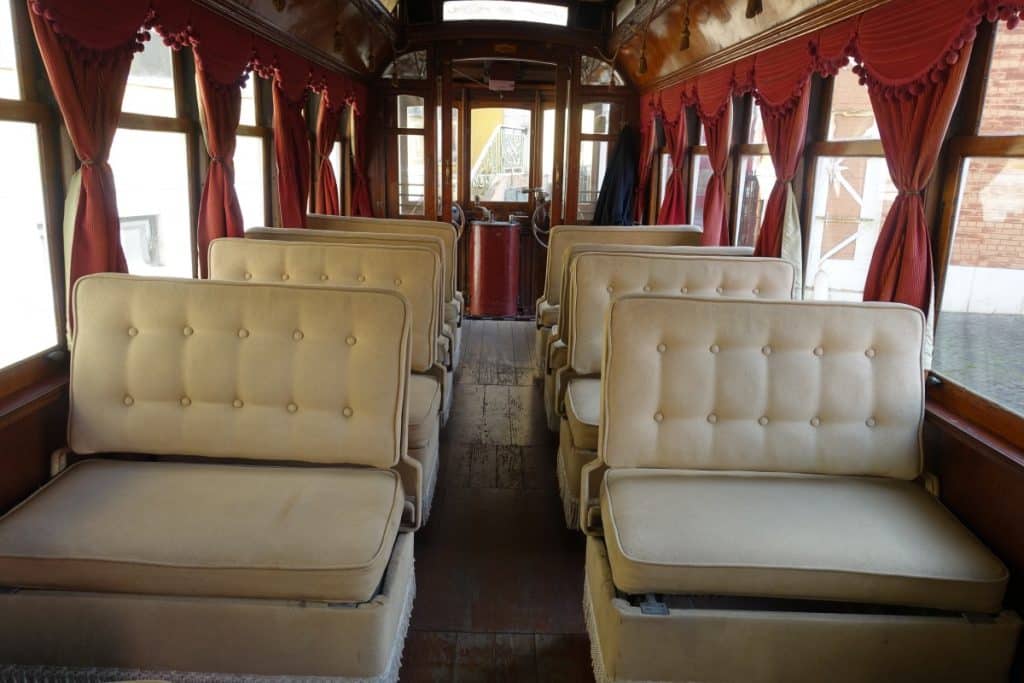
We took a seat on the plush light-coloured seats – everything here was just like you’d see in old films. Small lamps hung from the ceiling, curtains swung in front of the windows and the driver’s station showed the old controls. The engine started, it jerked and rocked, the driver stepped on a button with his foot and a bell sounded – the tram started.
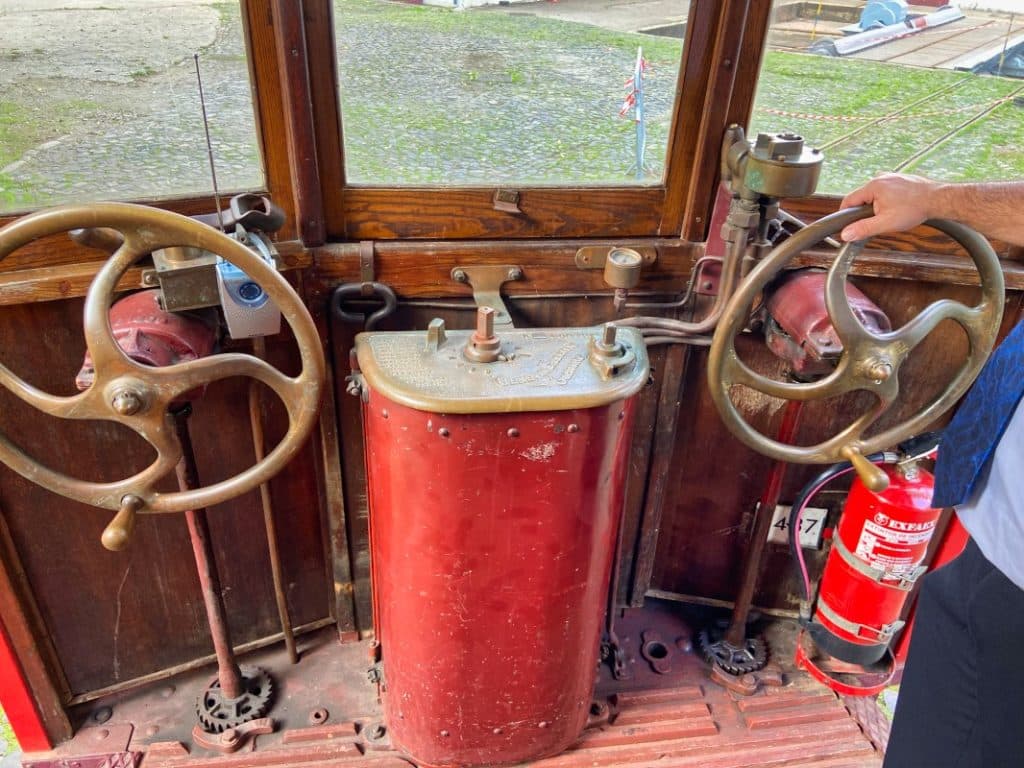
We actually drove through the depot on a tram from 1901 that was rebuilt in the 1960s. The ride was far too short to take in all the details. Just watching the tram driver was so interesting. He rang the bell with his foot, regulated the speed with a wheel and operated a few other controls. I almost forgot to look out of the window, because the view of the old buildings was also worthwhile here.
Then the tram stopped and we were shown the entrance door to the next area in the Museu da Carris.
The carriage hall in the Lisbon Tram Museum
The second exhibition area is located in a 2000 m² disused workshop hall. This is where the hearts of tram fans and lovers of old buses begin to beat faster.
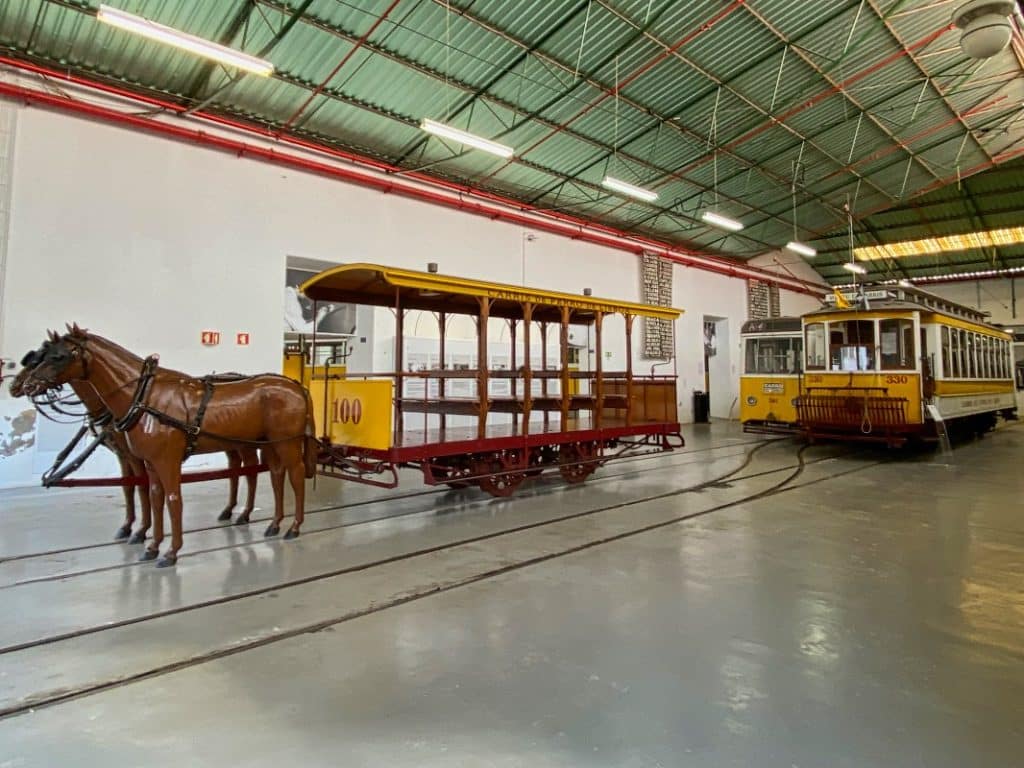
In the large hall you can discover trams of the most diverse series. You can even get on some of them and sit on the benches. You can experience what it must have felt like to travel in the city in the past.
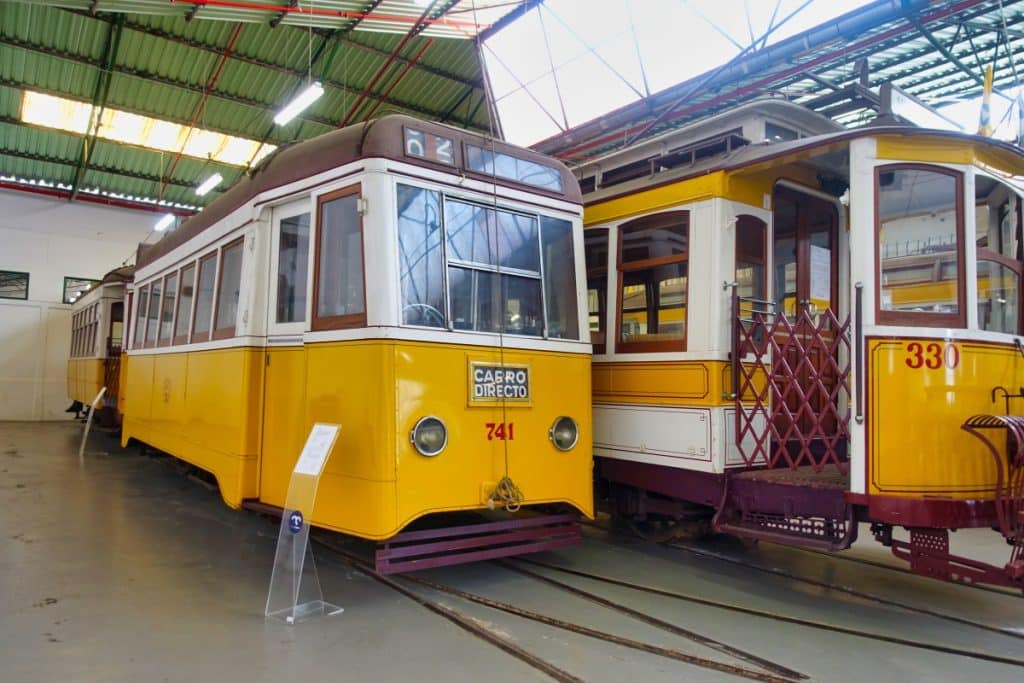
On the one hand, the exhibition shows vehicles that were in use at the end of the 1940s. But there are also vehicles from the second half of the 20th century. I was particularly pleased to be able to climb into an old bus and enjoy the view of the other vehicles from the upper deck.
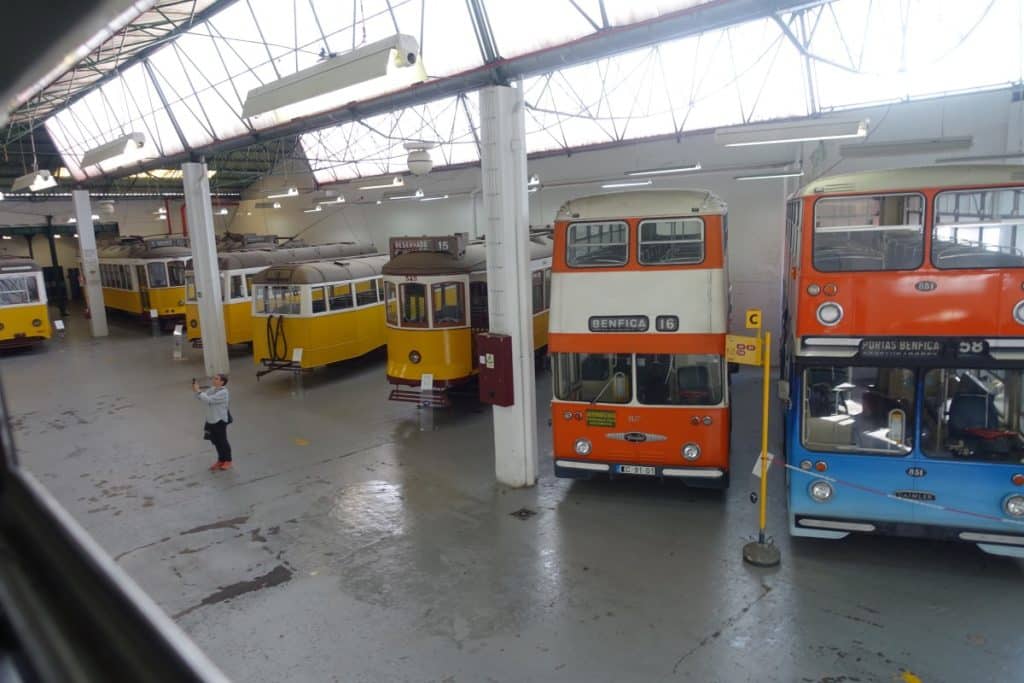
If you enter a smaller side hall, you can see the switchboards of the old Arco do Cego substation and other smaller machines. Here, for example, are machines that converted the alternating current into the direct current needed for the machines.
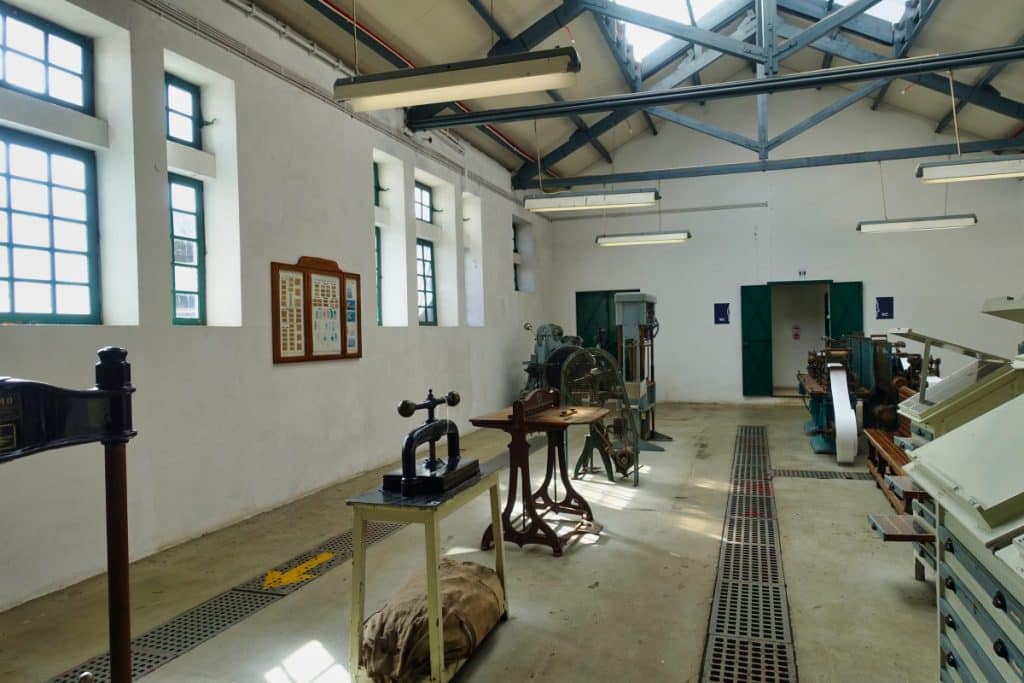
I was thrilled by the visit to the Lisbon Tram Museum. Even though I don’t know anything about the technology or the types of trams, I love looking at the old vehicles. And if you can ride them – and to get back to the exit of the museum you can get back on the old tram – then it’s perfect for me.
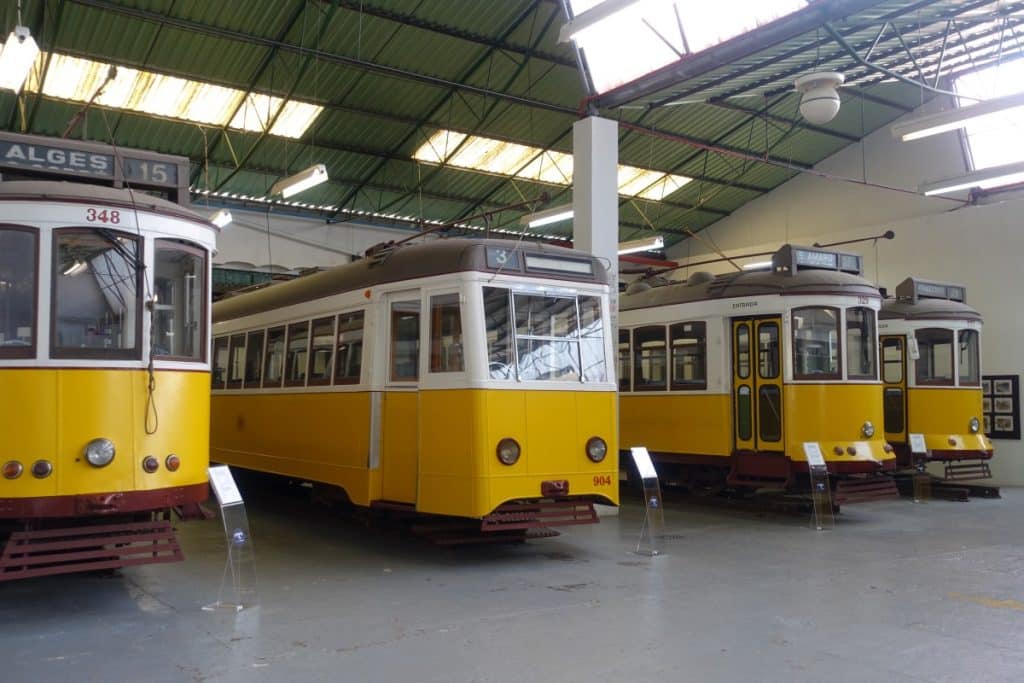
Addrese:
Museu da Carris
Rua 1º de Maio, 101 – 103
1300-472 Lissabon
Portugal
Opening hours:
Monday-Saturday:
10am-1pm and 2pm-6pm
closed: Sunday, public holidays
Admission fees:
Adults: 4,50 €
Discounts are offered.














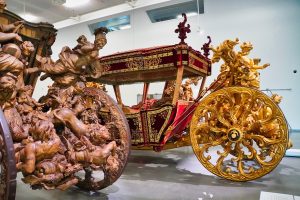
















Leave a Reply